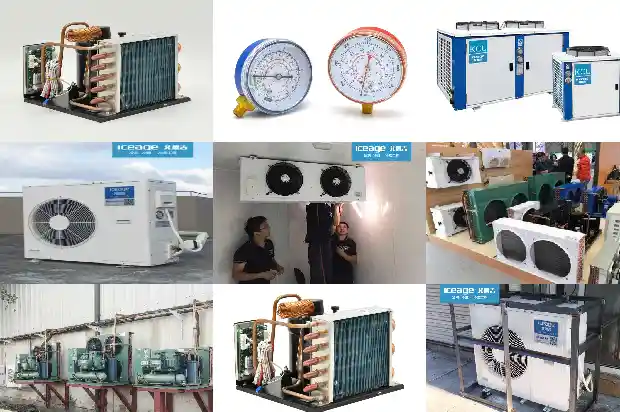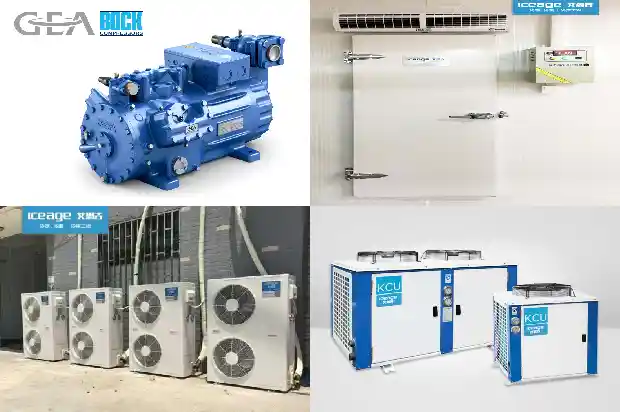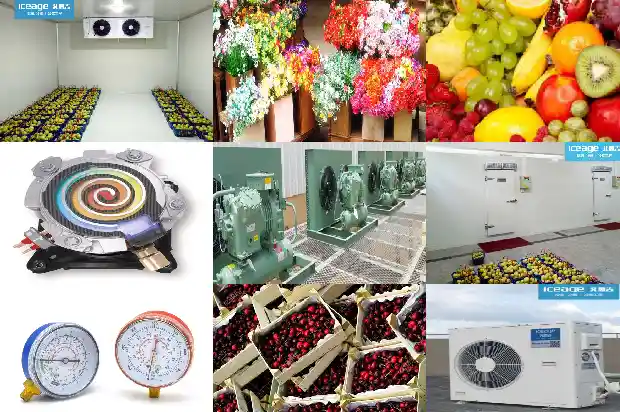How Food Cold Storages Ensure Food Safety
2024-09-08
Food safety is related to people's livelihood. Any 环节 in the process from production, storage, distribution, retail to the final arrival at the consumers of various types of food affects the quality and flavor of the food, especially for perishable food, fresh food, etc. A low-temperature environment is a necessary environment for storing various types of food. This is because in a low-temperature environment, the respiration of the food itself is weakened or the activities of microorganisms and enzymes are inhibited, delaying the process of food spoilage. According to the different links in the food circulation, in addition to ensuring low-temperature refrigeration and freezing of food in the installation and construction of various types of food cold storages, there are also special points that need to be noted in their respective links. There are slight differences according to the different usage properties of food cold storages. Let's take a look together.
After various types of food are picked or caught, they need to be cold-processed in a timely manner. They can be sent to the food cold storage for storage or sent to the sales place through refrigerated transport vehicles after being processed cleanly. This type of cold storage is called a production cold storage, which is mainly built in the production area where the source of goods is relatively concentrated and is used as the freezing workshop of fish, poultry, eggs, fish and shrimp, fruit and vegetable processing factories. Because the food is frozen and processed here and stored for a short period before being transported to other sales areas for storage or sale, which belongs to the category of assembling after disassembling, so in the site selection for the installation and construction of the production food cold storage, it is necessary to ensure the convenience of transportation.
After various types of food are cold-processed in the production cold storage, they are transported to the sales area for storage or sale. The food cold storage in each sales area is called a distribution cold storage, which is used for market supply needs, the completion of export plans, and long-term storage and transit transportation. The site selection for the construction of a distribution cold storage generally selects large and medium-sized cities, water and land transportation hubs, and industrial and mining areas with a large population.
After various types of food are stored in the distribution cold storage, they are transported to large, medium and small non-staple food stores in various cities for sale through basic equipment of cold chain logistics such as refrigerated transport vehicles. This kind of cold storage is called a retail cold storage, which is also relatively common in daily life and is often used for temporarily storing retail food. The characteristics of the retail cold storage are small storage capacity, short storage period, and the storage temperature varies according to different usage requirements.
After various types of food are picked or caught, they need to be cold-processed in a timely manner. They can be sent to the food cold storage for storage or sent to the sales place through refrigerated transport vehicles after being processed cleanly. This type of cold storage is called a production cold storage, which is mainly built in the production area where the source of goods is relatively concentrated and is used as the freezing workshop of fish, poultry, eggs, fish and shrimp, fruit and vegetable processing factories. Because the food is frozen and processed here and stored for a short period before being transported to other sales areas for storage or sale, which belongs to the category of assembling after disassembling, so in the site selection for the installation and construction of the production food cold storage, it is necessary to ensure the convenience of transportation.

After various types of food are cold-processed in the production cold storage, they are transported to the sales area for storage or sale. The food cold storage in each sales area is called a distribution cold storage, which is used for market supply needs, the completion of export plans, and long-term storage and transit transportation. The site selection for the construction of a distribution cold storage generally selects large and medium-sized cities, water and land transportation hubs, and industrial and mining areas with a large population.


After various types of food are stored in the distribution cold storage, they are transported to large, medium and small non-staple food stores in various cities for sale through basic equipment of cold chain logistics such as refrigerated transport vehicles. This kind of cold storage is called a retail cold storage, which is also relatively common in daily life and is often used for temporarily storing retail food. The characteristics of the retail cold storage are small storage capacity, short storage period, and the storage temperature varies according to different usage requirements.
Related Articles
- Requirements and Maintenance for Building Meat Food Cold Storage
- How to Prevent and Remove Odors in Food Cold Storage?
- What Are the Roles of Quick-Freeze Cold Storage in Food Preservation?
- What are the important significances of a warm environment for various types of food?
- What to note when building a seafood cold storage?
- Conditions are Required for the Construction of Small - sized Cold Storages
- Characteristics of Mini Cold Storages in Cold Storage Projects
- Differences Between Steel Structure Cold Storages and Multi-story Civil Engineering Cold Storages
- Steps for Building Logistics Cold Storages
- Some Simple Troubleshooting for Combined Cold Storages
- Temperature Requirements for Various Cold Storages
- Daily Maintenance Training for Users after Installation of Small and Medium-Sized Cold Storages
- Types and Temperature Requirements of Seed Cold Storages
- Principle of Multiple Storages in One Unit and Evaporation Pressure Regulation Methods
- What are the factors affecting large cold storages?
- How to Use Electricity Reasonably in Small Cold Storages?
- Reasons for Installing Thermal Insulation Layers in Cold Storages
- How to prevent vibration and reduce noise in the installation and construction of cold storages?
